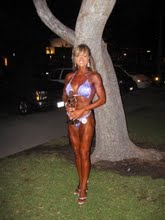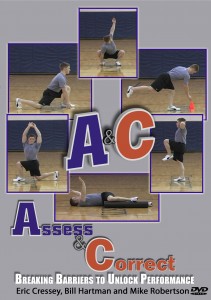I’m frequently asked when players should stretch and what types of stretching they should do. The answer I usually give to both of those questions is, “It depends.”
It depends on a number of factors: Is it for before practice? After games? At home? All of these questions need to be addressed before giving advice on proper stretching protocols.
Stretching is very important to any hockey player. Over time, if you aren’t stretching frequently, overuse injuries, such as muscle strains and pulls, can occur because your muscles are too tight.
In hockey, the muscles that have a greater chance of being injured include the adductors, hip flexors and lower back. That’s because hockey players skate with their knees, hips and spine bent. When they’re not on the ice, they’re usually sitting on the bench while they wait for their next shift or they’re sitting in their locker room stalls during intermissions.
The movements performed in hockey, combined with prolonged sitting, can contribute to the shortening of the muscles in your body. To prevent this from happening, some simple daily stretching techniques need to be implemented into your off-ice program.
Dynamic Stretching: This is done before practices and games, and it’s characterized by simply executing different types of movements. We really refer to it as our “Dynamic Warm-up.” During this time, the athlete is actively stretching and warming up the muscles used in that particular movement. We might do a specific exercise, such as a body-weight squat, for 8-10 reps.
Active Isolated Stretching: Founded and endorsed by massage therapist Aaron Mattes, this type of stretch we do within our strength-training workouts and with individuals who may need extra attention on certain muscle groups. When we’re in a strength-training sessions, we’ll always stretch the opposite muscle group of the one we’re strength training between sets. For example, if we’re working our upper-back muscles in an exercise such as a chin-up, we’d active isolate stretch our chest muscles between sets. Here, we hold the stretch for six seconds, relax, and repeat. We do three repetitions.
Static Stretching: This is usually what people refer to when they think of traditional stretching. Here, we hold our stretches for a period of 20-30 seconds. Again, we’ll stretch our groins and hip flexors, as well as other muscle groups that can traditionally become tight in hockey players such as the IT bands, quads, hamstrings and chest. Static stretching is done primarily after practices and games, because when you stretch after activity, it’ll help bring the muscles back to a lengthened state after being used in the game or practice.
What I’ve learned about stretching is that it shouldn’t be too easy; it should be almost uncomfortable, but not painful. Most people will stretch within their comfort zone and work muscles that don’t need to be stretched, while the ones that do are often neglected.
No matter what method you use or when you use it, stretching can be very beneficial for the overall performance and well being of a hockey player.





